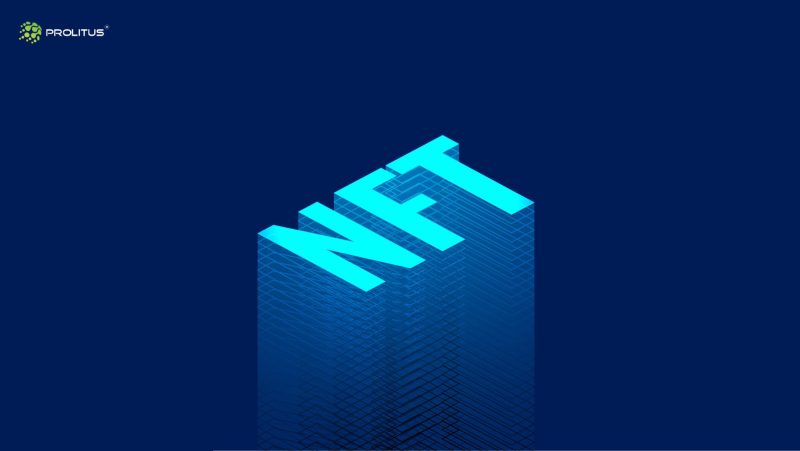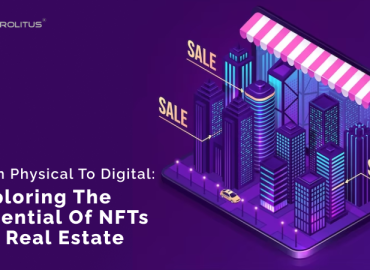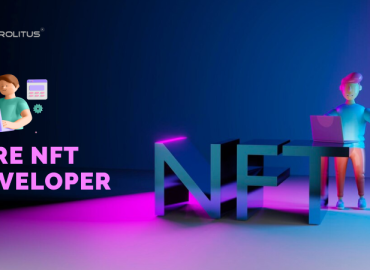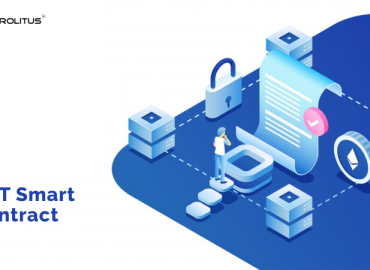NFTs can be summarized as non-replaceable digital assets based on blockchain technology. which are not just reliable as they’re unique in their own way, but also non-exchangeable and non-editable.
NFTs are a legitimate way to transfer the ownership of digital items. This is on record forever and can never be edited or deleted.
FNFTs are created by splitting an existing NFT into small pieces. These pieces can then be traded on decentralized exchanges just like any other cryptocurrency. When a new investor purchases an FNFT, they receive a certificate that represents their ownership stake in the underlying asset. This certificate can be stored in a digital wallet or transferred to another investor.
So, what exactly are fractional NFTs? How do they work? And what are their benefits? Let’s find out.
Introduction: What are Fractionalized NFTs?
Fractionalized NFTs are a new type of security that is built on the blockchain. They allow for fractional ownership of an asset, which can be traded just like any other security.
How do they work?
Fractionalized NFTs are created by dividing an asset into several pieces, or “fractions”. These fractions can then be traded on the blockchain just like any other security.
Why are they valuable?
Traditional assets offer several advantages over fractionalized NFTs. First, they allow for fractional ownership, which makes them more accessible to investors. Second, they are tradeable on the blockchain, which makes them more liquid and easier to sell. Finally, they are digital, which makes them easier to store and track.
The advantages of FNFTs
Democratic Flexibility: Only through fractionalization and ownership democratization can expensive NFTs be made accessible. Fractionalization generates fascinating results. For beginners, it ensures affordability. Second, if one of the fractional owners decides to sell their fraction at a lower price, the value of the fractions secured by other stakeholders is unaffected. Third, even if an NFT’s auction bidder price rises, it will still attract buyers willing to pay lower prices for fractionalized ownerships.
Enhanced liquidity: Fractional NFTs can easily overcome the liquidity issues associated with expensive NFTs. Previously illiquid assets, such as real estate, luxury goods, and high-end art, can now be converted into NFTs and fractionalized to increase liquidity. When an NFT is divided into multiple ERC-20 tokens and sold separately, it attracts a lot more attention. As a result, your asset becomes a topic of discussion in the community and sells out faster.
DeFi Integration: F-NFTs can be used in DeFi because they are supported by ERC-20 tokens. Many ERC-20 tokens, for example, can be traded on DEXs or used for staking and yield farming.
What about the advantages for NFT buyers, aside from the fact that they can become investors even with limited funds? They can, however, diversify their portfolio and increase their collection of NFTs. They can purchase fractional NFTs that represent various artworks or assets. Some of these F-NFTs may rise in value over time, and the buyer will benefit financially.
Monetization Possibilities: Through fractionalized NFTs, artists and NFT owners can easily monetize their assets. If you own an NFT marketplace, the introduction of fractional NFTs will bring you financial benefits, as well as help in attracting more investors to your platform.
Use cases for FNFTs
Some industries that are likely to be impacted by the evolution of F-NFTs are listed below:
Gaming: One of the upcoming fields of application where we expect to see a significant fundamental change away from NFTs is most likely the gaming industry. The personal history, accomplishments, communities, tales, and status of gamers’ digital identities have significant inherent worth. The digital products that gamers spend hundreds or even thousands of dollars on in games include costumes to give their avatar a distinctive look, boosts to increase their performance in the game or unlockable content. The Play-to-Earn concept is now available. It is a place where users may play games, add value to the ecosystem through their gameplay, and win NFT digital goods. By possessing these items, players can sell their NFTs and profit alongside the game developer. Instead of potentially exploitative developer-customer relationships, this one fosters synergistic ones. And as opposed to being centrally controlled by a single game publisher, these NFTs are owned by the player. Your NFTs may continue to work and be usable in other virtual worlds even if the game closes. Power and wealth are distributed in this revolutionary technological revolution.
Art: NFT owners and digital artists will both have the choice to break their assets into smaller pieces and sell each F-NFT piece separately to investors. As a result, upcoming artists can easily sell their digital works of art on the market.
Real Estate: FNFTs have the potential to have a significant impact on the real estate market by making it simple for anybody to buy a share of a luxury home, which was previously impossible. To enable a variety of investors to invest in the F-NFTs, a high-priced luxury property can be fractionalized into several F-NFTs. In addition, because tenants can hold some of the property jointly, mortgages won’t be required to purchase a property.
The Metaverse: The metaverse is a rapidly expanding concept. There is bound to be a lot of investment from the “physical world” with companies like Decentraland, Sandbox, and Facebook building in the expanding virtual universe. FNFTs could let people, groups of people, investors, and even large companies work together to buy virtual land and other assets in the virtual world.
The future of FNFTs
Until now, NFT ownership has been unique in the DeFi world. However, fractionalized NFTs offer investors additional options. Numerous exchanges offer liquidity for ERC-20 and ERC-721 tokens. However, in this new era, developers must create new exchanges. These exchanges will have to list assets and verify their authenticity, as well as divide up smart contracts.
The F-NFT industry may face certain regulatory obstacles to overcome, but given the scale of its real-world applications, the future is still promising. This technology can be used by artists, creators, virtual builders, gamers, and collectors.
As blockchain technology improves, we may see more interesting innovations and ways to use it in the NFT sector, which is becoming more and more popular and in demand.
Final thoughts
The concept of asset fractionalization is not new, but it has only recently entered the NFT space. It has already caught the attention of investors of all sizes because it makes tokens that are usually hard to get much easier to get.
Fractional NFTs offer more advantages than just greater accessibility and lower costs. Additionally, they facilitate the pricing of NFTs and open up new revenue streams; they can also be connected with DeFi platforms.
Greater liquidity made possible by NFT fractionalization makes the market accessible to a larger range of investors and all but ensures that F-NFTs will drive the subsequent wave of digital asset monetization. As NFT’s popularity and demand continue to grow, we may also see a lot more interesting developments in this field.





